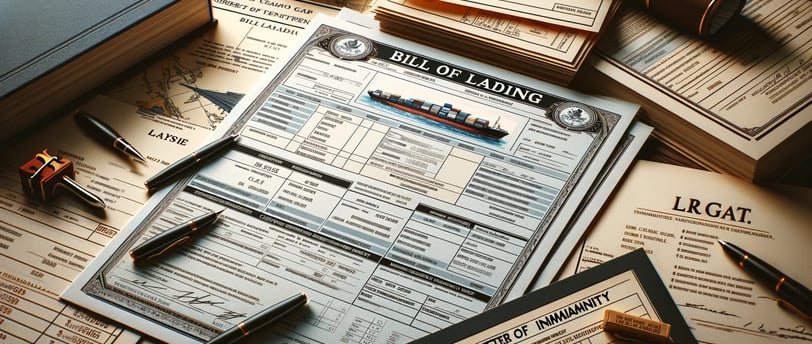Some of the Important Documents in Overseas Shipping
This post covers the reason why shipping documents exist, their individual names, purposes and who is responsible for their production.


Introduction
Overseas shipping can be a very risky endeavour. Shipments can break, get lost, and in extreme events, never be loaded in the first place. If a trader is to minimize the risk/liability of the transportation, then certain documents are needed to protect themselves and transfer the risk to insurance organizations. At every stage of the transportation process, there are documents that are produced to show a successful completion of that stage.
Inspection Reports
Before your goods ever leave the supplier’s location, you need to have an inspection performed by a 3rd party. The inspection report from a credible 3rd party will remove the risk of defective goods at the source. A sample of the cargo is tested to be within specifications with an acceptable error of 2%. This removes any potential claim for defective goods or goods not produced to required specifications, protecting the quality of your shipment and removing the liability from the suppliers/producers. This document will unlock the next stage, which is the delivery to the port for sea freight.
Bill of Lading
A Bill of Lading (B/L) is an extremely important document, issued by the carrier of the freight. It tells you that the cargo is shipped on board. A "clean" B/L implies that the cargo is in good condition, while a "dirty" implies there has been some damage. This is an important distinction, because if you have an inspection report that details the quality of the goods to be shipped at the point where they have not left the supplier, and the B/L is "dirty" then you know that the goods were damaged in the transportation stage between the supplier and the boarding the freight. You would then be able to make a claim against the liable parties.
the bill of lading offers proof to the financing parties that the goods have been transferred from the possession of the supplier to the freight and that you now hold the title to the goods. This is when the supplier's bank receives payment from your financier. So, the banks want to see the B/L's, as part of the process for Letters of Credit.
Letters of Credit
Letters of Credit (LoC) are payment mechanisms used in trade finance to minimize risk in large transactions. Payments are made only after certain conditions are met. The buyer's bank issues an LoC to the supplier's bank to guarantee a payment. This alleviates the credit risk associated in a large transaction.
Letters of Indemnity
Letter of Indemnity (LoI) are contracts issued by a bank or insurance company designed to protect a party from losses. In this case, the owner of the cargo are insured against damage, losses or theft while the cargo is being transported by the freight forwarder or transported at port.
Contracts of Affreightment
Sometimes, a buyer will rent a charter, either for a period of time (time charter), or for a specific voyage (voyage charter). The vessels are owned by another entity so an agreement has to be in place to specify the rights and obligations. This is where the Contract of Affreightment (CoA) is used. The terms are set in this contract, and penalties, called demurrage fees.
Summary
As a buyer of goods from an overseas supplier, you will be facing risks in transportation. In order to reduce your risks and insure your cargo, you will need to have certain documents in your records.
Bill of Lading - Critically important document confirming freight on board and confirmation of title
Letter of Credit - Guarantees your ability to pay your supplier provided the conditions are met
Letters of Indemnity - Transfers liabilities to parties handling the transport
Contracts of Affreightment - Specifies the terms, rights and obligations in a vessel rental contract
Inspection Reports - Not essential but generally good practice to make sure that your good are up to spec
Now that you know about some of the important documents in the shipping process, have a look at the different types of shipping vessels.